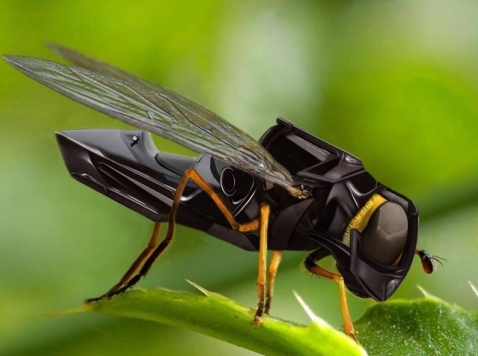‘Swarm robotics’ is a growing industry being put to use in creative ways. The concept has been around for decades, but groups of small robots working in teams to complete tasks has come in handy on the conservation and agricultural front.
The environmental applications being explored range from coral restoration and oil spill clean-ups to precision farming – even the creation of artificial bees to pollinate crops.
Researches at Sheffield University posted a video last year of a robot swarm working in tandem to push an object toward a target.
Dr Roderich Gross, senior lecturer in robotics and computational intelligence at the university, explains the concept: “In a swarm system there is no single point of failure – if a unit fails, the whole system keeps on going, which makes it very fault-tolerant and robust. Wherever you have a very heavy load that a human cannot manipulate by itself, using a swarm of robots to do the job would be very sensible. That could be in a factory, transporting boxes. Or it could be a search-and-rescue scenario – maybe a collapsed building and you need to remove a very heavy part, or working in contaminated environments.”
“Coral bots” have been used to “restore ocean habitats.”
“I am mostly a deep sea biologist working in waters deeper than 200m. Getting to the ecosystems we study is expensive, so while we’re there we have to maximise our productivity,” she explains. “Coral bots are single purpose so they need only follow simple rules. That means having multiple underwater robots working across a larger area, instead of a single unit traversing a smaller area. Whether their job is to restore or simply to map or video the seafloor, swarms can cover a far greater area and work [carries on even] when one member’s batteries run out.”
Researchers are looking for ways to include robot swarms in agriculture as well. Swarms are able to identify weeds and administer chemicals using less herbicide to do so. “When you look to countries that can’t take advantage of big tractors with smaller fields, I think smaller robots might have a bigger impact around the world than big machines. In the whole of Asia, the average field size is about one acre… there is a significant middle area round the world of smaller farming systems where if robots were made cheap enough and reliable enough it would actually be applicable,” says Professor Simon Blackmore head of engineering at Harper Adams University.
One famous example of swarm robotics was a project out of Harvard University involving “Robobees.” The “robobees” were used “to find an artificial solution to pollination to address the current decline in the global bee population.”

COMMENTS
Please let us know if you're having issues with commenting.